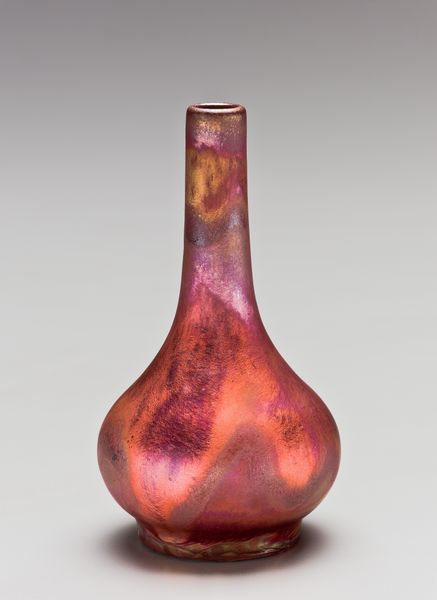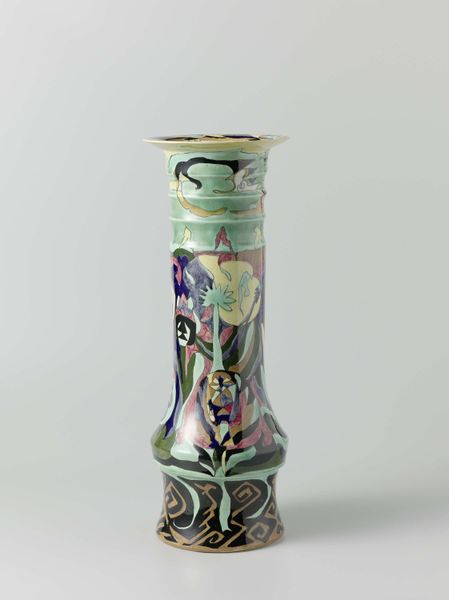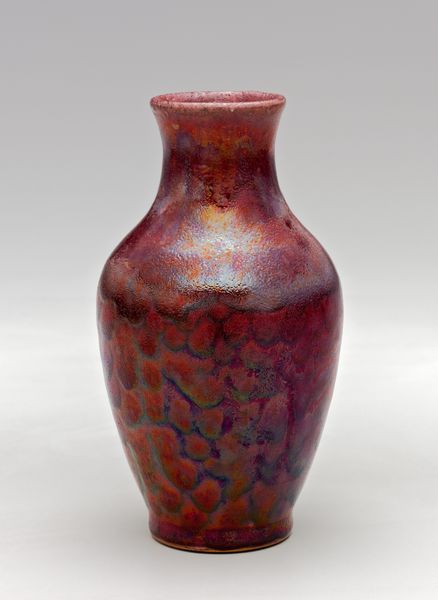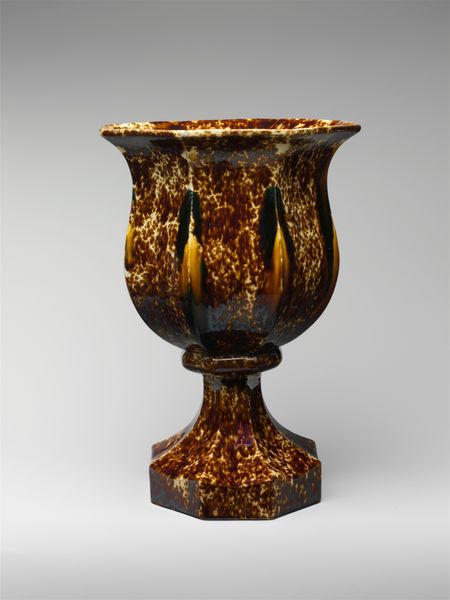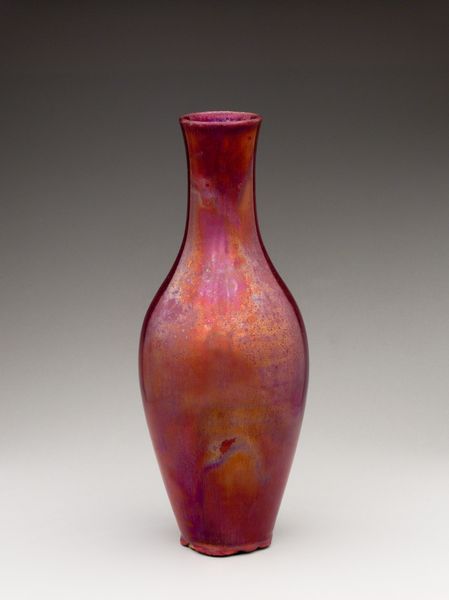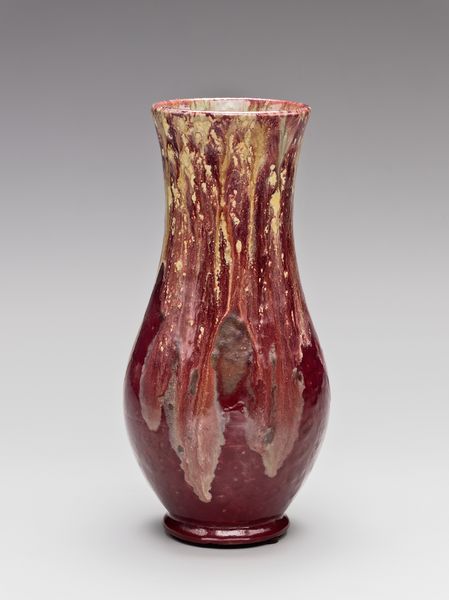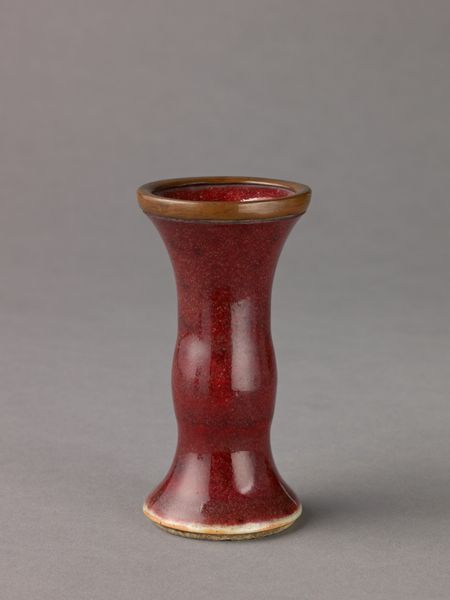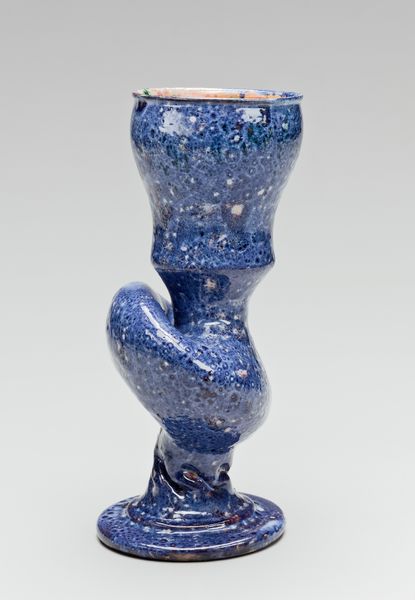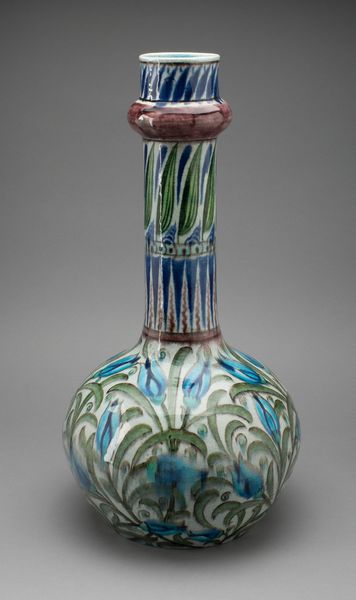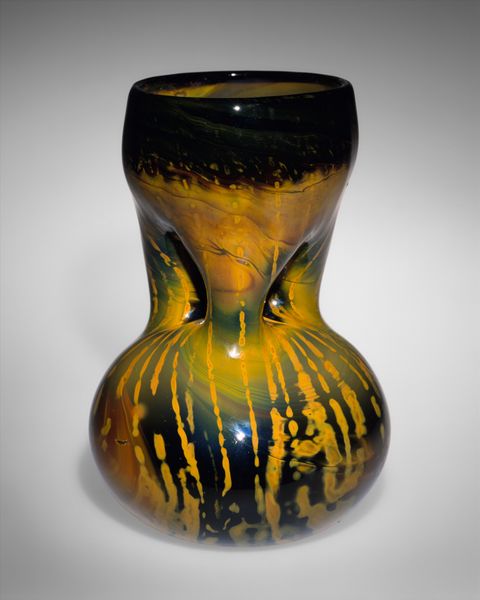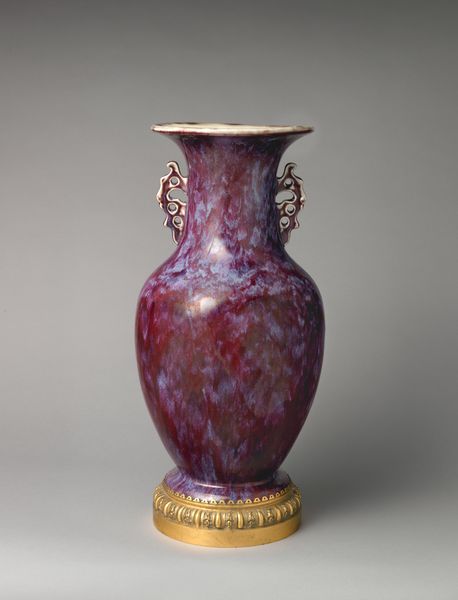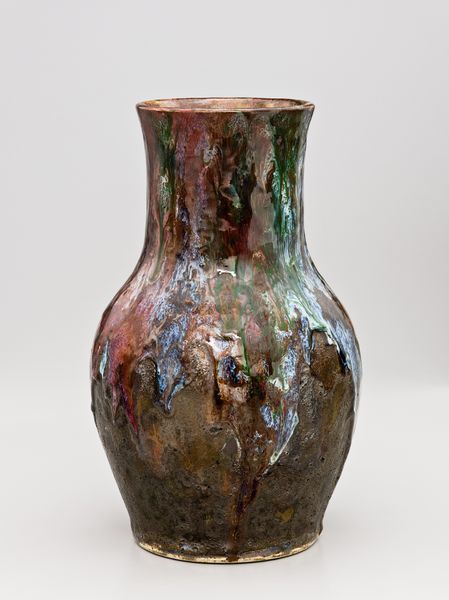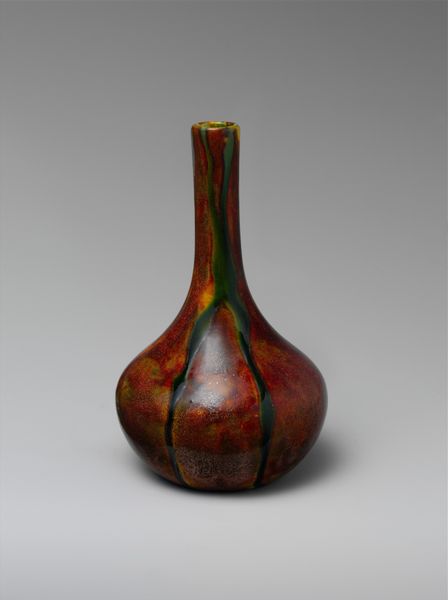
ceramic, earthenware, sculpture
#
art-nouveau
#
ceramic
#
abstract
#
form
#
earthenware
#
stoneware
#
sculpture
#
ceramic
#
decorative-art
Dimensions: 13 x 6 7/8 in. (33 x 17.5 cm)
Copyright: Public Domain
Curator: Here we have a ceramic "Vase" crafted between 1894 and 1903 by George E. Ohr, currently residing at The Metropolitan Museum of Art. Editor: It has this bizarre elegance, like something from a fairy tale… albeit one where the fairy tale goes through a kiln. A lovely, twisted kiln. Curator: "Bizarre elegance" nails Ohr’s approach, really. He challenged conventional pottery, embracing imperfection, manipulating the clay into these almost impossibly thin, contorted forms. How did that emphasis on manipulating clay challenge established pottery practices? Editor: By making visible the artist’s struggle with the clay—that battle for control and its inevitable yielding. You feel the maker in every imperfect twist, bubble and crack, transforming material weakness into aesthetic strength. It's almost like it tells a silent story of its making. I'd say he turned labor into... liberation. Curator: Exactly. Ohr called himself the "Greatest Art Potter on Earth," a marketing angle for sure. He embraced mass production but twisted each piece individually, rejecting the clean, industrial aesthetic in favor of visibly worked, expressive forms that pushed against established styles. The materiality itself is expressive, not just in the shaping but also with the glaze. It almost seems to... unstable, in constant motion, mirroring Ohr's own approach. Editor: Absolutely, and there's something really magnetic in its unpredictability. It almost feels alive, less a pristine museum piece and more an ancient artefact unearthed from the earth. I sense this subtle, internal drama... the tension of creation still captured within its fired skin. Curator: He was definitely provocative, even confrontational, in his desire to reveal the making, and challenge people's conceptions. Ohr’s impact stretches beyond decorative arts; his focus on process links him to the ethos of studio craft. His innovations speak volumes about labor, value, and what we consider "art". Editor: It’s a piece that lingers. It starts conversations. For me, it's less about its function as a vessel and more about its potent symbolism: clay, touch, struggle, story. All bound up together. Curator: And I’d say that’s precisely why Ohr’s pieces command our attention even now; that convergence you pinpoint is a story told, not just crafted.
Comments
No comments
Be the first to comment and join the conversation on the ultimate creative platform.
